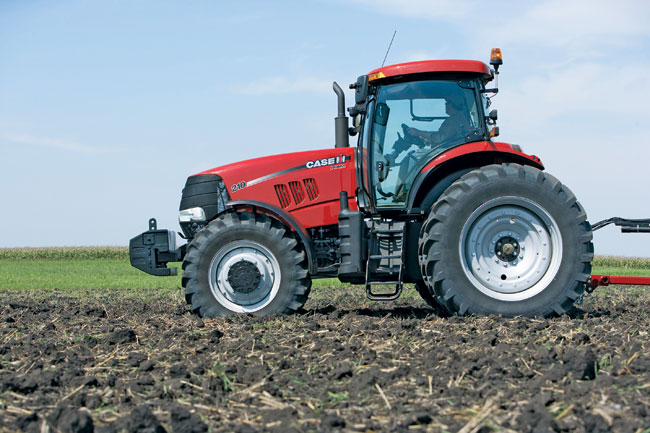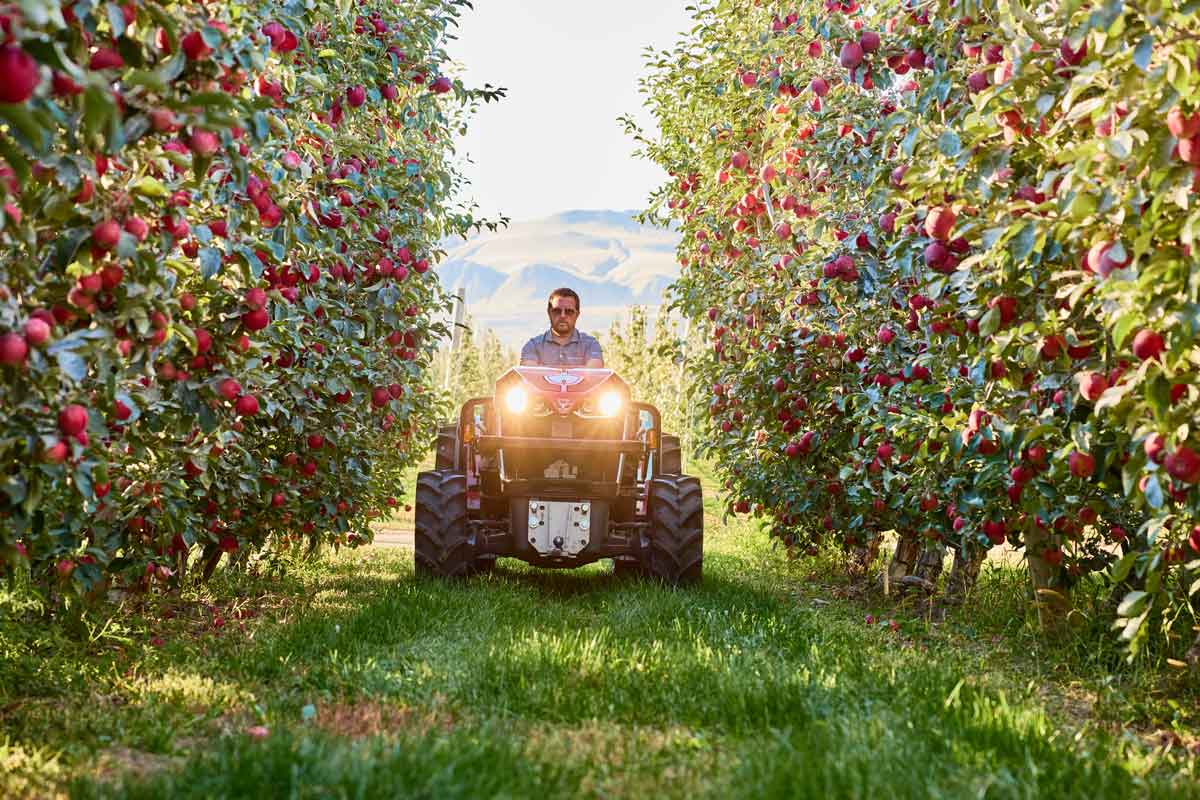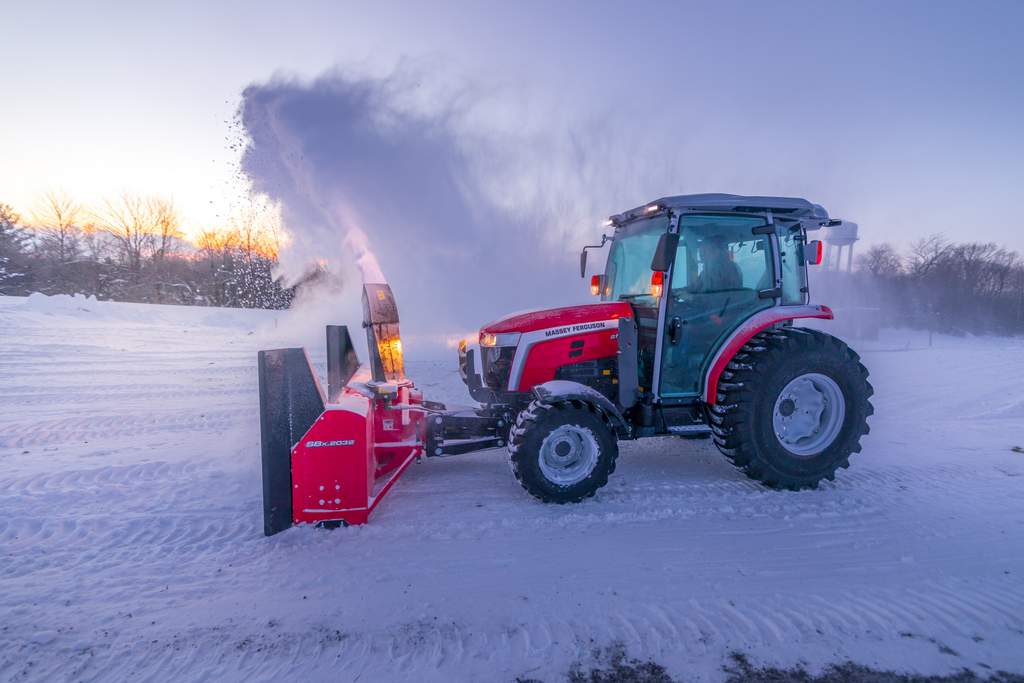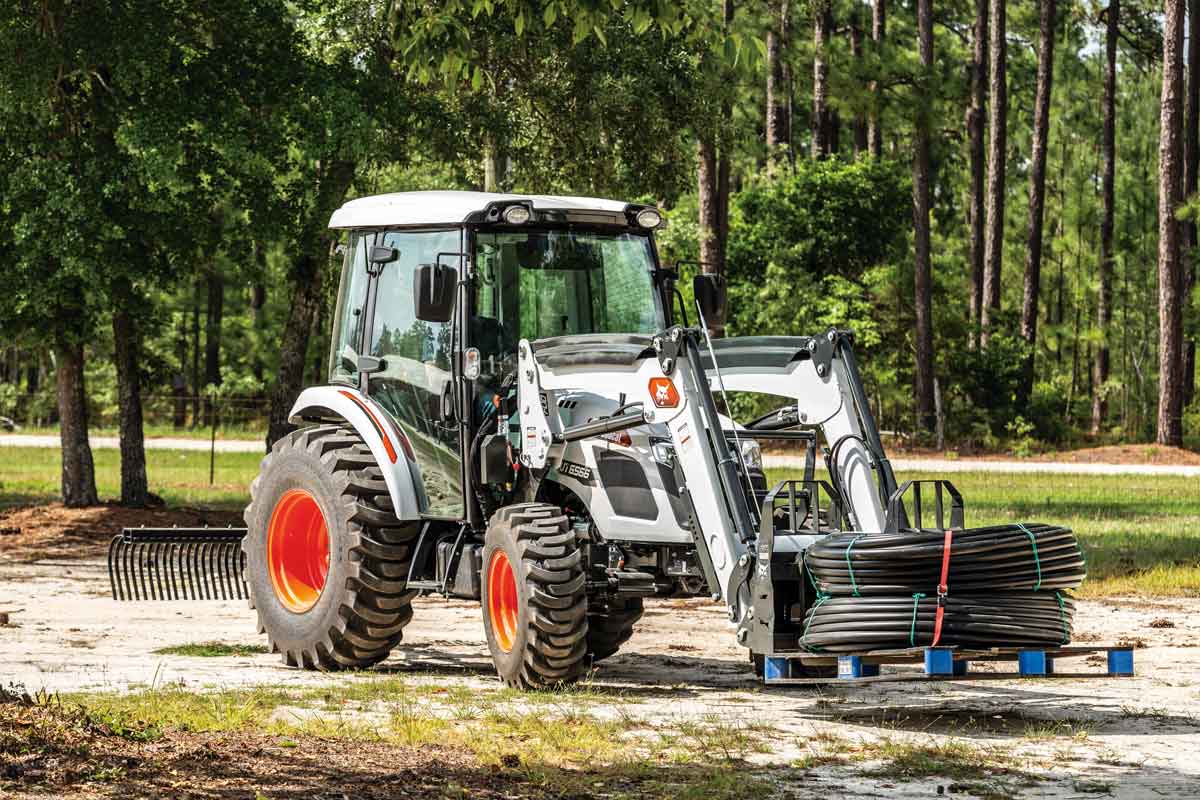Tractor Tires
Compact tractors are versatile machines. Whether doing light tillage work in loose soils, landscaping on sensitive turf or moving construction materials on concrete, compact tractors have the ability to get the job done in almost any setting. That ability, however, is highly dependent on having the right tires for the application. Compact tractor tires are generally divided into three categories — agricultural tires, turf tires and construction tires — each of which are designed to perform on a specific terrain.
Agricultural Tires
Agricultural tires generally feature an R1 tread design with a higher void-to-lug ratio and a larger tread depth than turf or construction tires. This design offers good performance in loose soil work — such as light tillage — where traction is a concern, but ground disturbance is not.

Turf Tires
Turf tires are generally an R3 tread design, which features shallow, button-style lugs that are flexible and will not damage sensitive turf. This design is ideal for settings where ground disturbance is a concern, such as landscaping work on golf courses. Turf tires come in a variety of widths, but it’s important to know that the wider the tire, the better the flotation. Wide flotation tires spread the ground-bearing pressure over a greater footprint, which reduces turf damage. As an example, a push mower can actually do more damage to a wet lawn than a much heavier, 20-hp tractor with flotation tires due to the large footprint.
Construction Tires
Construction tires use an R4 tread design with shallow, durable lugs designed with a void-to-lug ratio between that of agricultural tires and turf tires. With more rubber on the road than an agricultural tire, the tires provide a smooth ride and prolonged tread wear on hard surfaces such as concrete and asphalt.
The type of tires on a tractor should be a critical factor in the overall decision to buy a tractor, not only from a performance perspective, but from a cost perspective. Keep in mind that switching the tire setup from turf to agricultural (or from any setup to another) may require an entirely new wheel and tire combination, which can cost anywhere from $400 to $600 for each tire and wheel combination.
It is also of paramount importance that the tires match the exact specifications of the wheel. Because most compact tractors feature a mechanical front wheel drive, they have a lead/lag ratio, meaning the front wheels turn faster than the rears. Thus, if the overall diameter of the tires does not match the exact specifications of the wheel, the drive train can be damaged. This demonstrates the importance of selecting both the tire and wheel assembly from the same manufacturer or from separate manufacturers that make standardized sizes readily available.
Maintaining Your Tires
The best way to ensure tire longevity is to regularly monitor and adjust inflation pressures to the recommended levels of the manufacturer, which can vary greatly based on load. It’s important to consult the manufacturer’s handbook on recommended inflation pressures whenever an attachment is added or removed from the tractor. Doing so will ensure the tires are not under- or over-inflated, both of which can cause damage to the tire.
Don’t Be Afraid to Ask
Arriving at the ideal tire solution should be entirely based on how and where the tractor will be used. When in doubt, it’s always best to consult with your local tire dealer in order to arrive at the best solution for your specific application.
Skip Sagar is a sales representative at Titan/Goodyear Farm Tires, based in Des Moines, Iowa.




